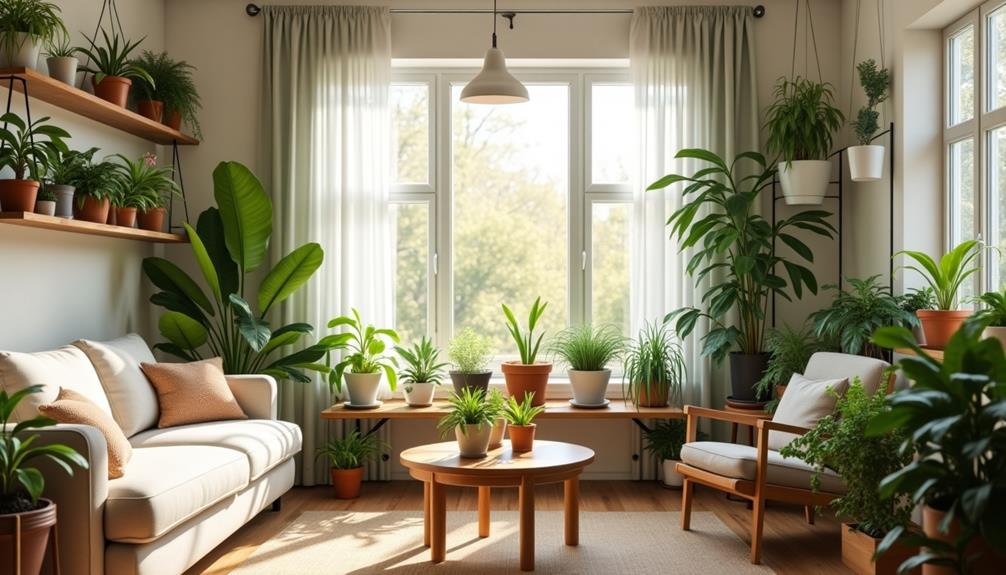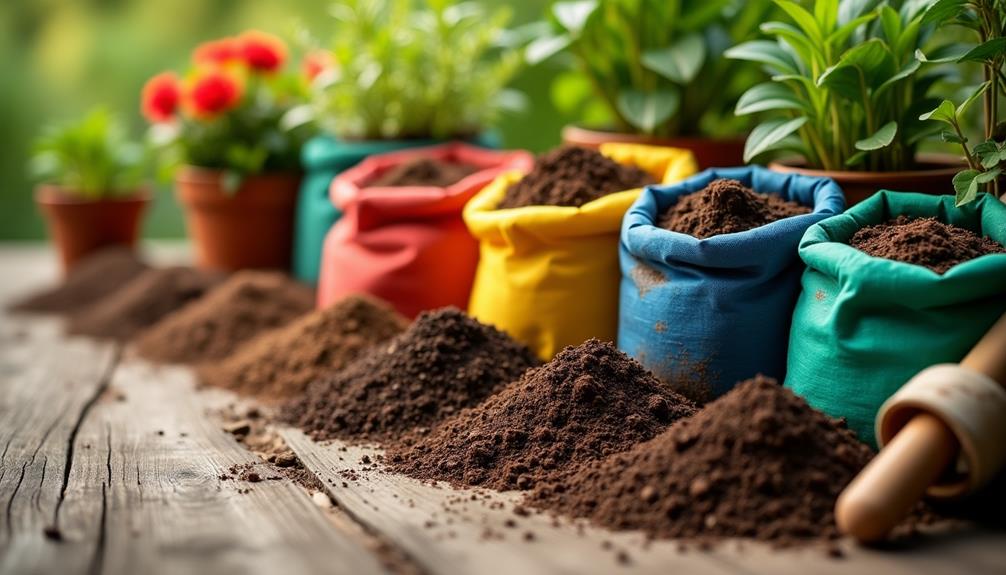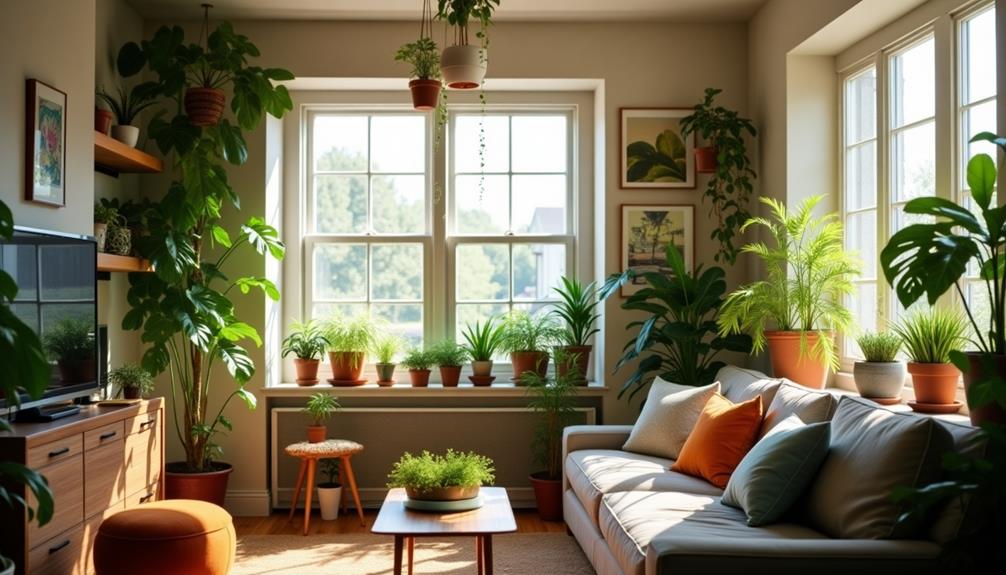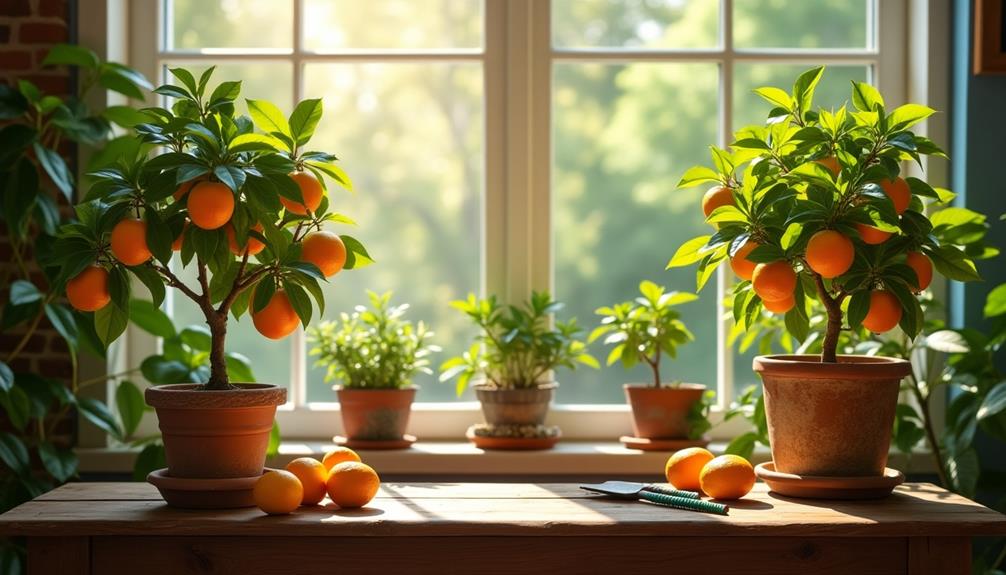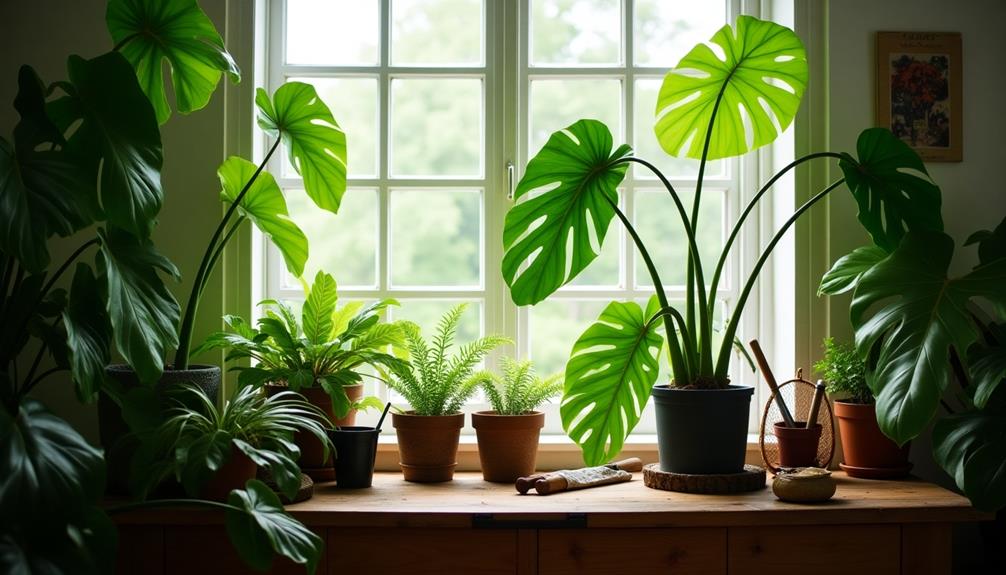When you're considering how to create an indoor-outdoor living area, it's essential to start by assessing your space and envisioning the flow between the two environments. You'll want to think about materials that can withstand the elements while still complementing your interior style. By focusing on functional layouts and the right furniture, you can enhance both comfort and aesthetics. It's also important to incorporate natural light and greenery to bring life into your design. But what crucial elements can make or break this seamless transition?
Assessing Your Space
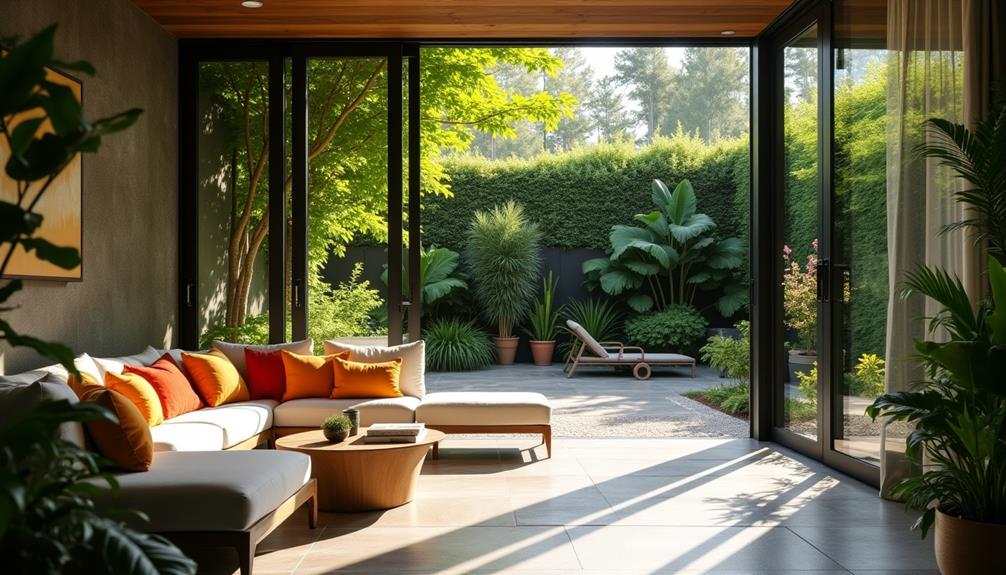
When assessing your space for an indoor-outdoor living area, start by evaluating the layout and dimensions of both environments.
Take a close look at the space dimensions and how they influence your design options. Consider climate considerations, as they'll impact your choices for furniture and plants.
Next, think about your aesthetic preferences. Do you envision a seamless transition between indoor and outdoor spaces or a distinct separation?
Your privacy needs also play a crucial role; determine if you require barriers like hedges or screens to ensure a comfortable atmosphere.
Don't forget to assess accessibility options. Ensure that the flow between spaces accommodates everyone, including those with mobility concerns.
Additionally, the surrounding environment can dictate your design; for instance, if you have a beautiful view, you'll want to highlight it.
Consider your seasonal usage as well. Will you be using this space year-round or just during warmer months?
Choosing the Right Materials
Selecting the right materials is crucial for creating a harmonious indoor-outdoor living area that withstands the elements and enhances your design vision.
Start by considering sustainable materials that align with your eco-friendly choices. Look for weather-resistant options like composite decking or stone that can handle varying climates while minimizing maintenance requirements.
Next, think about aesthetic appeal. Choose materials that offer color compatibility with your existing decor, ensuring a seamless transition between spaces.
Texture contrasts can elevate your design; for instance, pairing smooth furniture with rough-hewn stone can create visual interest.
Cost considerations also play a significant role. While some sustainable materials may have a higher upfront price, their durability can lead to long-term savings.
Always balance quality with your budget to make informed choices.
Designing Functional Layouts
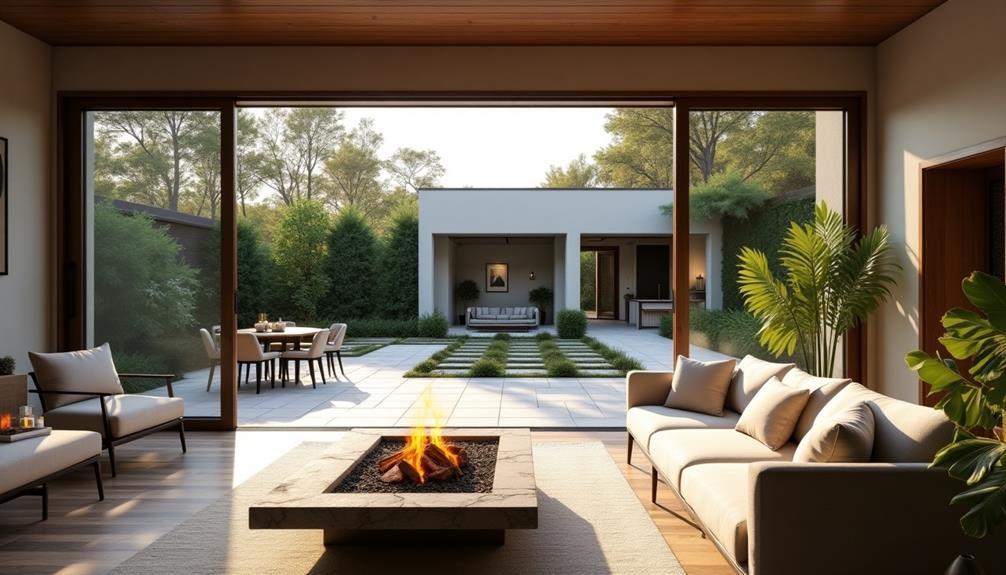
When you're designing your indoor-outdoor living area, think about zoning for different activities.
Creating distinct spaces for dining, lounging, and entertaining helps everyone flow seamlessly between them.
Zoning for Activities
Zoning for activities in your indoor-outdoor living area is essential for creating a functional layout that caters to your lifestyle. Start by identifying your primary activity zones.
Think about how you want to use the space—do you need recreational areas for family fun, relaxation spots for quiet moments, or social spaces for gatherings? Effective space planning allows you to create a functional division that enhances each zone's purpose.
Consider purpose-driven design by selecting furniture and decor that align with the activities you'll be hosting. For instance, a cozy seating arrangement in your relaxation spot can encourage unwinding, while a spacious dining area can facilitate meals with friends.
Don't forget about privacy considerations. If you're designing a social space, ensure it feels inviting yet separate from quieter zones. Use landscaping, screens, or decorative elements to create boundaries without obstructing views.
Flow Between Spaces
Creating a seamless flow between spaces in your indoor-outdoor living area enhances both functionality and aesthetics. To achieve this, focus on effective transition techniques that guide movement and create a harmonious environment.
One approach is to use consistent flooring materials that visually link your indoor and outdoor spaces. This simple choice can make the transition feel natural and inviting.
Incorporating large sliding or folding glass doors not only opens up your space but also enhances sensory experiences. When these doors are wide open, you can enjoy the sounds of nature and the scents of your garden, making the indoor area feel more connected to the outside.
Consider the layout of your furniture as well. Arrange seating and dining areas to promote easy movement between spaces, ensuring that pathways are clear and inviting.
Use plants or decorative screens to define areas while maintaining a sense of openness.
Incorporating Natural Light
Natural light is essential for transforming an indoor-outdoor living area into a vibrant, inviting space. To maximize this natural light, consider various skylight options.
Installing a skylight not only brightens the interior but also creates a seamless connection to the outdoors. Choose from fixed, vented, or tubular skylights based on your space and lighting needs.
Don't forget about your window treatments. Opt for sheer curtains or blinds that allow light to filter in while maintaining your privacy.
You can also consider retractable screens that provide protection from insects while keeping the space airy and light-filled.
Strategically placed mirrors can reflect light around the room, enhancing the overall brightness.
If you have sliding glass doors or large windows, think about leaving them unobstructed or using minimalist frames to create a clear view and let more light in.
Selecting Suitable Furniture
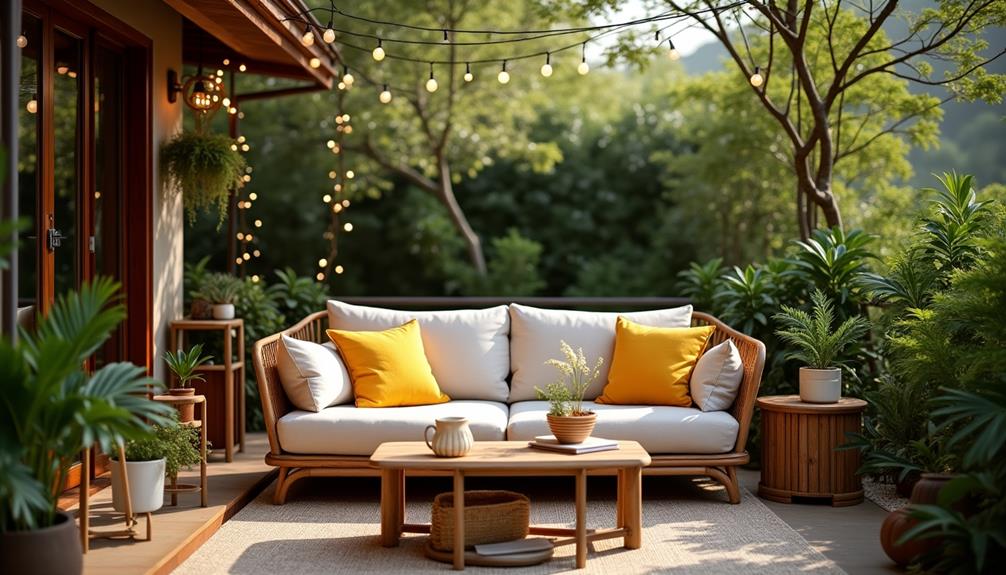
When selecting furniture for your indoor-outdoor living area, consider both material durability and the balance between style and comfort.
You'll want pieces that can withstand the elements while still feeling inviting and stylish.
Material Durability Considerations
Choosing the right furniture for your indoor-outdoor living area hinges on material durability, as it directly impacts both aesthetics and longevity.
You'll want to prioritize weather resistance to ensure your pieces can withstand the elements without degrading. Look for materials that require minimal maintenance; this saves you time and effort while keeping your space beautiful.
Aesthetic appeal is also crucial. Consider how the color durability and texture options of your furniture will complement your overall design. Materials like teak or aluminum can offer both style and resilience, making them popular choices.
Don't forget about the environmental impact of your selections. Opting for sustainably sourced materials can enhance your space while being eco-friendly.
Additionally, cost considerations must play a role in your decision. While some durable materials may require a higher initial investment, their longevity often makes them more economical in the long run.
Lastly, think about the installation techniques necessary for your chosen furniture. Ensure they fit seamlessly into your indoor-outdoor flow.
Style and Comfort Balance
Balancing style and comfort is key to selecting suitable furniture for your indoor-outdoor living area. You want pieces that not only look great but also feel inviting.
Start by considering your color schemes; choose shades that harmonize with both your indoor décor and outdoor surroundings. This creates a cohesive flow that enhances the overall aesthetic.
Next, think about texture combinations. Mixing materials like smooth metal with soft fabrics can add depth and interest to your space. For instance, a sleek metal chair paired with a plush, weather-resistant cushion can provide both comfort and a modern edge.
Don't shy away from bold patterns or colors, especially for outdoor furniture. These can energize the space and make it feel more dynamic. Just remember to keep comfort at the forefront—opt for ergonomic designs that support relaxation.
Lastly, ensure the furniture is versatile. Lightweight options make it easy to rearrange for different occasions, while stackable or foldable pieces save space when not in use.
Adding Greenery and Decor
To create a seamless indoor-outdoor living area, incorporating greenery and decor is essential, as it breathes life into the space.
Start with your plant selection; choose a mix of indoor and outdoor plants that thrive in your climate. Think of vibrant flowers, lush ferns, or even small trees that can stand as focal points. Utilizing pots or planters can help define areas and add a touch of style.
Next, layer in decorative accents to enhance the overall aesthetic. Consider using outdoor rugs, cushions, and throws to create a cozy atmosphere that encourages relaxation.
Don't forget about lighting; string lights or lanterns can add warmth during evenings, making your space inviting.
Incorporate art pieces or sculptures that reflect your personal taste, bridging the gap between indoor comfort and outdoor beauty. You might even want to hang a mirror to reflect the greenery, making the area feel larger and more open.
Maintaining Indoor-Outdoor Flow
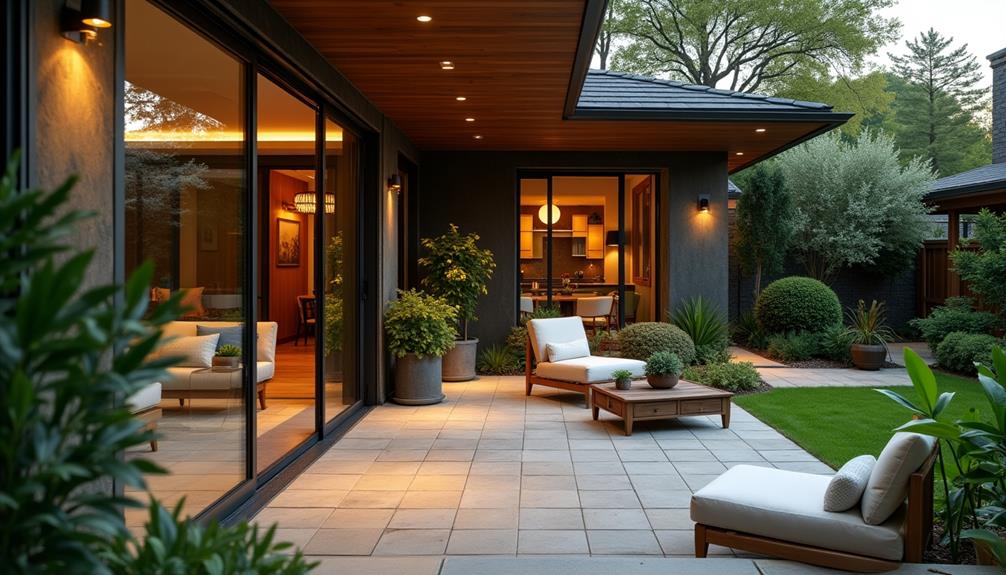
Creating a seamless indoor-outdoor living area goes beyond just adding greenery and decor; it's about maintaining a consistent flow between both spaces. To achieve this, consider how you connect the two environments.
Use large sliding glass doors or bi-folding doors to create easy access and visual continuity. These features invite natural light in and blur the boundaries.
Next, pay attention to your indoor lighting. Opt for warm, inviting fixtures that echo your outdoor ambiance. This way, when the sun sets, your indoor space feels just as inviting as your patio or garden.
Outdoor privacy is also crucial in maintaining that flow. Use strategically placed planters or trellises with climbing plants to create both separation and unity.
This not only offers a sense of seclusion but also enhances the visual connection between your indoor and outdoor spaces.



